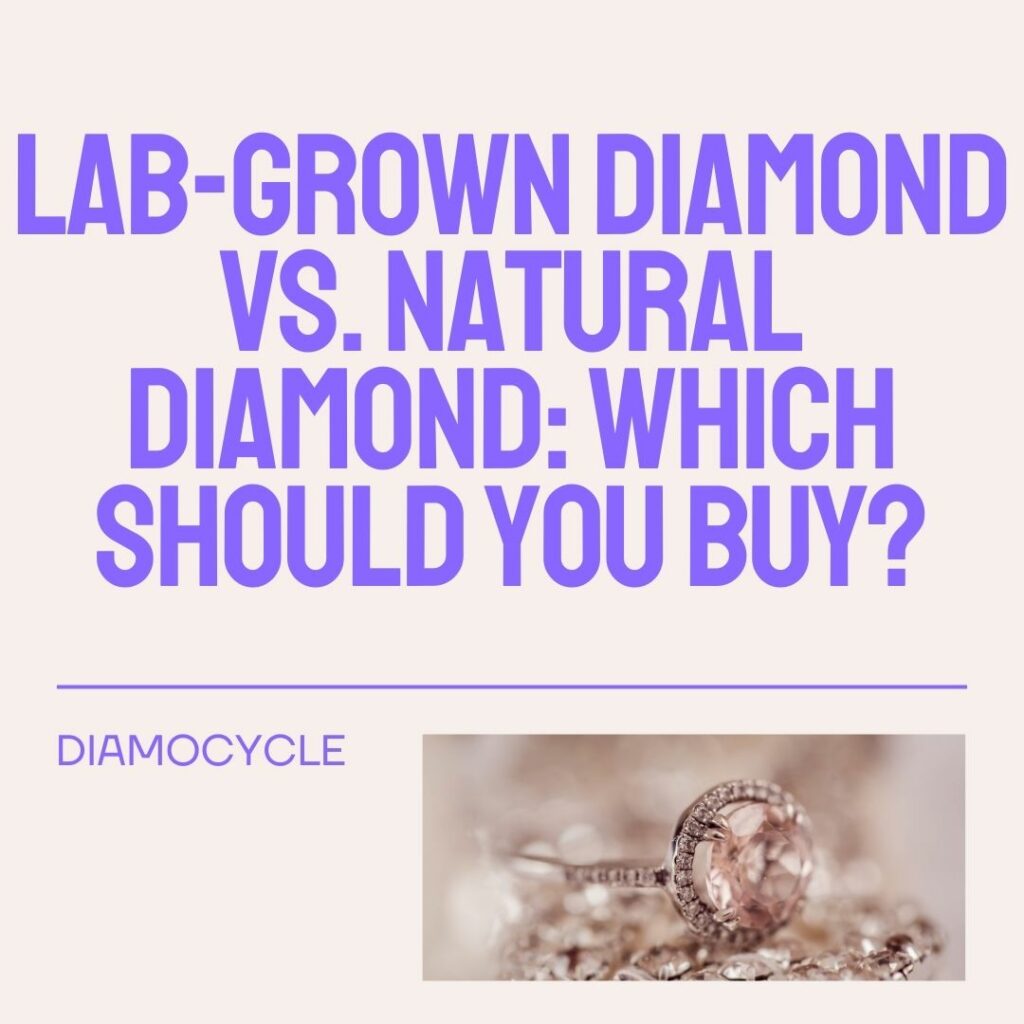Choosing between a lab-grown diamond and a natural diamond can be a daunting decision, as both offer unique benefits and considerations. Let’s explore the differences between these two options to help you make an informed choice that aligns with your preferences and values.
1. Origins:
Natural Diamonds: Mined from the earth over millions of years, natural diamonds are formed under intense heat and pressure deep within the earth’s mantle.
Lab-Grown Diamonds: Also known as synthetic or cultured diamonds, lab-grown diamonds are created in controlled laboratory environments using advanced technological processes that mimic the natural diamond-growing conditions.
2. Environmental Impact:
Natural Diamonds: The mining of natural diamonds often involves significant environmental disruption, including habitat destruction, soil erosion, and water pollution. Additionally, the carbon footprint associated with diamond mining and transportation contributes to greenhouse gas emissions.
Lab-Grown Diamonds: Lab-grown diamonds have a significantly lower environmental impact compared to their mined counterparts. By utilizing sustainable energy sources and reducing the need for extensive land excavation, lab-grown diamonds offer a more eco-friendly alternative for environmentally conscious consumers.
3. Ethical Considerations:
Natural Diamonds: The diamond mining industry has been associated with ethical concerns, including human rights abuses, child labor, and exploitation of local communities in certain regions where diamonds are mined.
Lab-Grown Diamonds: Lab-grown diamonds are free from the ethical issues commonly associated with traditional diamond mining. They are produced in ethical working conditions and offer transparency in the supply chain, providing consumers with peace of mind regarding their purchase.
4. Quality and Characteristics:
Natural Diamonds: Natural diamonds are valued for their rarity, unique characteristics, and inherent beauty. Each natural diamond is one-of-a-kind, with variations in color, clarity, and cut that contribute to its individuality and allure.
Lab-Grown Diamonds: Lab-grown diamonds exhibit the same physical, chemical, and optical properties as natural diamonds. They are virtually indistinguishable from mined diamonds and offer consistent quality, clarity, and brilliance. Additionally, lab-grown diamonds may be available at a lower price point compared to natural diamonds of similar quality.
5. Resale Value:
Natural Diamonds: Natural diamonds typically retain about 50% of their original purchase value when resold in the secondary market. This resale value is influenced by factors such as market demand, diamond quality, and prevailing economic conditions.
Lab-Grown Diamonds: Lab-grown diamonds generally have a lower resale value compared to natural diamonds, typically ranging from 10% to 20% of their original purchase price. While lab-grown diamonds offer excellent value for initial purchase, their resale value may be lower due to factors such as market perception and evolving consumer preferences.
Conclusion:
Ultimately, the choice between a lab-grown diamond and a natural diamond depends on your personal preferences, values, and budget. If you prioritize environmental sustainability, ethical sourcing, and affordability, a lab-grown diamond may be the ideal choice for you. However, if you value the rarity, uniqueness, and timeless allure of a natural diamond, then a mined diamond may better suit your preferences. Regardless of your decision, both options offer exquisite beauty and lasting value, ensuring that you find the perfect symbol of love and commitment for your special occasion.

